Nepal: 'Some migrants find themselves trapped in modern slavery — their stories must be told'
Displacement and migration lead to tension in South Asia. A new network aims for better coverage and more dialogue. Experts from six countries met for the first time in Nepal.
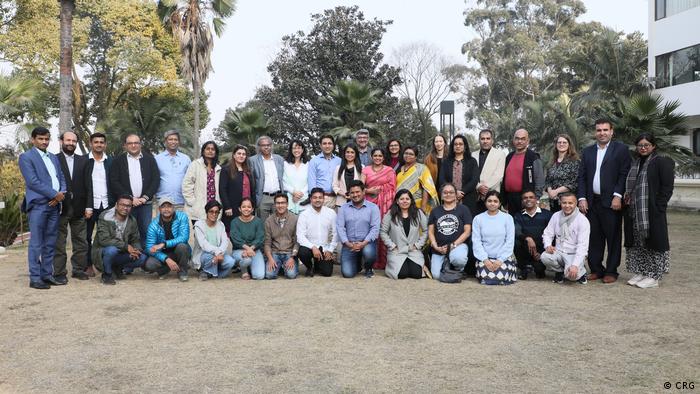
Som Prasad Lamichhane was himself a migrant worker in, among other countries, Saudi Arabia. What he saw there changed his life. Many labor migrants there work every day of the year in punishing heat at construction sites. "They’re exploited and unpaid, their passports are confiscated, there are many accidents," said Lamichhane. "Many return to their homelands in coffins, but even that isn’t guaranteed."
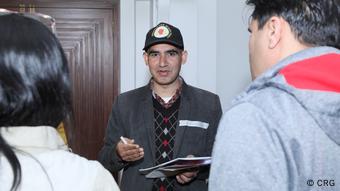
Som Prasad Lamichhane was himself long employed as a migrant worker in Arab countries and today heads the Pravasi Nepali Coordination Committee, which looks after exploited people and their rights.
His experiences prompted him to lead the organization Pravasi Nepali Coordination Committee (PNCC) in Kathmandu, which focuses on protecting the rights of Nepalese migrant workers abroad and helping them when they return to Nepal. The NGO offers support in crisis, provides legal counsel, and helps with resettlement, all the while seeing to it that migrant labor issues remain in the public eye.
Migrant labor is endemic across South Asia. Nepalese alone account for hundreds of thousands of migrant workers abroad, namely as a matter of escaping their country’s poverty. They frequently end up in wealthy countries around the Persian Gulf, but also in Malaysia and Singapore. It’s similar in Bangladesh. India both exports and imports migrant laborers and is home to many domestic labor migrants, as became evident during the COVID-19 crisis.
Scant media coverage
But the media pays little attention to the crisis, according to Som Prasad Lamichhane. They publish official government statements. But reporting that emphasizes human rights is essential.
To shed more light on the migrant situation in South Asia, Lamichhane spoke recently in Lalitpur, Nepal, at the three-day regional gathering, "Displacement and Vulnerabilities - A Conference on Forced Migration and Media in South Asia," hosted by the Calcutta Research Group (CRG) in India, and in cooperation with DW Akademie and the Nepal Institute of Peace. The conference drew more than 50 journalists, media experts and researchers, as well as civil society organization representatives from across India, Bangladesh, Pakistan, Afghanistan, Sri Lanka and Nepal.
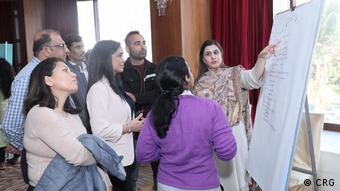
Conference participants from six countries working in groups according to the World Café method with Fakhira Najeeb
Among other topics, participants discussed reporting challenges and, above all, how to collaborate more closely. The conference was the first opportunity for members of the newly founded South Asia Network for Communication, Displacement and Migration (SAN-CDM) and other interested people to get to know each other in person.
Overcoming barriers to communication and exchange
The regional alliance SAN-CDM aims to improve communication and reporting on displacement and migration in South Asia through cross-border interdisciplinary exchange.
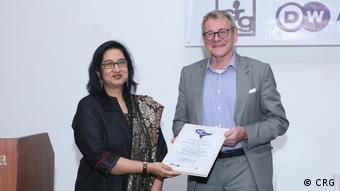
Nasreen Chowdhory and Dr. Thomas Prinz, Ambassador of the Federal Republic of Germany to Nepal, present the joint statement on the new regional network SAN-CDM South Asia Network of Communication, Displacement and Migration
“Despite differences, the countries share common challenges," said Samata Biswas of the Calcutta Research Group, which coordinates the alliance. "We look at similarities, not differences." The CRG is an Indian organization based in Calcutta which serves as a forum for discussions on democracy, human rights and peace in the region.
Similar regional challenges arise when reporting on those who must leave their homes because of climate change catastrophes, such as drought, flooding and overly salinized land. All of these have devastated areas of Bangladesh, India, Pakistan and Nepal and experts predict it will only worsen. The World Bank estimates that by 2050, there will be some 50 million so-called “climate migrants” in South Asia – annually. In reporting on this issue, media professionals often lack data so as to accurately convey the scale of the problem, which was discussed at the conference.
The regional alliance SAN-CDM aims to improve communication and reporting on displacement and migration in South Asia through cross-border interdisciplinary exchange.
Including the migrant perspective
The two largest refugee groups in South Asia, moreover, deserve greater coverage: the ethnic Rohingya fleeing Myanmar for Bangladesh and Afghans in neighboring countries.
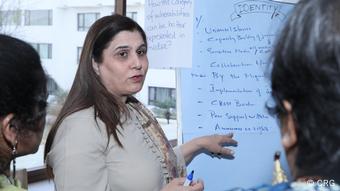
Fakhira Najeeb discusses and notes how media can better portray the vulnerability of populations and the role aspects of identity play in this process
"Pakistani media ignores Afghan refugees," said Fakhira Najib, head of the NGO Power99 Foundation in Islamabad. Her organization therefore enables Afghans to tell their stories as citizen journalists. The Tribal News Network (TNN) in Pakistan’s Khyber Pakhtunkhwa province offers similar opportunities, and the Bangladeshi organization YPSA produces radio and video programs with Rohingya.
"We support these projects so that those affected can speak for themselves and are not just spoken about," explained Andrea Marshall, Program Director for the project Displacement and Dialogue South Asia at DW Akademie. "Domestic media tends to portray refugees as either victims or else perpetrators - criminals or scroungers. It happens often in Europe, too. If refugees can speak for themselves, these stereotypes fall away."
But on which of these affected groups should the media focus more? Are there "hierarchies of vulnerability"? Which voices are featured in the media, which are not, which research findings are paid attention to, which not, and why is this so? Why is there so little talk about the fact that migrant and refugee integration can improve a country's economic situation?"
Answers to these questions are complex, but the Lalitpur conference participants could agree on some things: Experts on displacement and migration in the region need to support one another and cooperate. And there need to be appropriate platforms for all those impacted by these crises and media should publish and broadcast those voices. "Some migrants are forced into human trafficking, a modern form of slavery," said Som Prasad Lamichhane. "Their stories need to be told."
"We need more migrant stories within other stories," added Roksana Mohammed of Organisation BRAC in Bangladesh. And Annie Philip, an independent journalist from Bangalore, India, is sure of one thing: "The new regional network SAN-CDM can provide important support."
- Date 23.03.2023
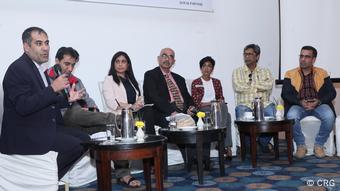
No comments:
Post a Comment